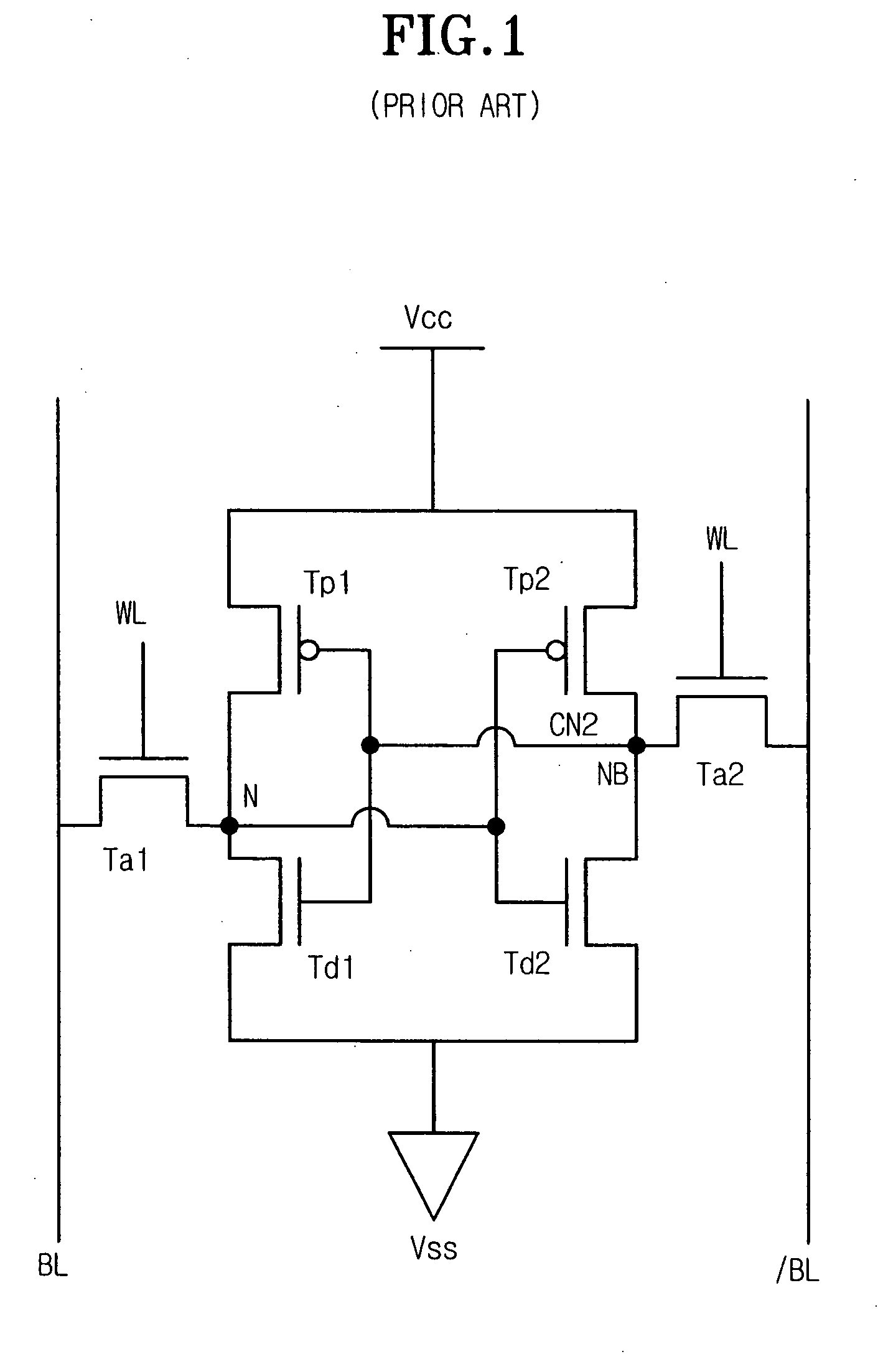SRAM cell and method of manufacturing the same
a random access memory and cell technology, applied in semiconductor devices, digital storage, instruments, etc., can solve the problems of soft error, electric charge stored in a cell node to be lost, soft error, etc., and achieve the effect of reducing soft error and increasing cell capacitan
- Summary
- Abstract
- Description
- Claims
- Application Information
AI Technical Summary
Benefits of technology
Problems solved by technology
Method used
Image
Examples
Embodiment Construction
[0034] Hereinafter, a preferred embodiment of the present invention will be described in detail.
[0035] The soft error in a SRAM, as described above, is caused by variation of a node voltage which is generated so that electrons having arrived at a cell node change the electric charge distribution of the cell node. If the amount of electric charge in a cell node, which may vary the node voltage, is increased, the variation of a node voltage caused by electrons having arrived at the cell node is inhibited, and thereby soft error can be efficiently reduced.
[0036] Therefore, in the present invention, cell capacitance is increased to increase the amount of electric charge in a cell node, so that undesired variation of a node voltage caused by electrons having arrived at the cell node is prevented and thereby the soft error rate is reduced. To this end, in the present invention, after metal interconnection lines are formed, a dielectric film and a metal plate are formed, and thereby addi...
PUM
 Login to View More
Login to View More Abstract
Description
Claims
Application Information
 Login to View More
Login to View More - R&D
- Intellectual Property
- Life Sciences
- Materials
- Tech Scout
- Unparalleled Data Quality
- Higher Quality Content
- 60% Fewer Hallucinations
Browse by: Latest US Patents, China's latest patents, Technical Efficacy Thesaurus, Application Domain, Technology Topic, Popular Technical Reports.
© 2025 PatSnap. All rights reserved.Legal|Privacy policy|Modern Slavery Act Transparency Statement|Sitemap|About US| Contact US: help@patsnap.com



